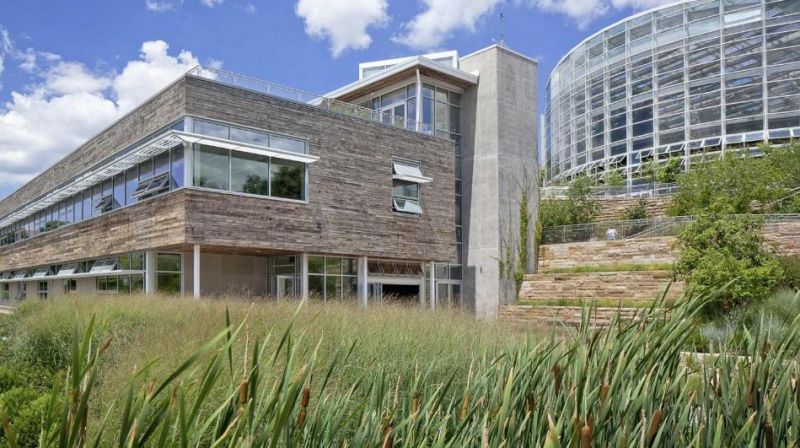The Benefits and Costs of a Novel Water Reuse Systems
Published on by Water Network Research, Official research team of The Water Network in Academic
Research examines for the first time the benefits and costs of the "decentralized" water system at the Center for Sustainable Landscapes (CSL) at Phipps Conservatory and Botanical Gardens.

The Center for Sustainable Landscapes exterior with constructed wetlands and lagoon at Phipps Conservatory and Botanical Gardens. Credit: Denmarsh Photography Inc.
This system treats all non-potable water on site, contributes to the net-zero building's recognition as one of the greenest buildings in the world.
However, research into the efficacy of these systems versus traditional treatment is practically non-existent in the literature. Thanks to a collaboration between Phipps and the University of Pittsburgh's Swanson School of Engineering, researchers now have a greater understanding of the life cycle of water reuse systems designed for living buildings, from construction through day-to-day use.
"Evaluating the Life Cycle Environmental Benefits and Trade-Offs of Water Reuse Systems for Net-Zero Buildings," published in the journal Environmental Science and Technology (DOI: 10.1021/acs.est.6b03879), is the first-of-its-kind research utilizing life-cycle assessment (LCA).
Co-authored by Melissa M. Bilec, associate professor of civil and environmental engineering at Pitt and deputy director of the Mascaro Center for Sustainable Innovation (MCSI), collaborators at Phipps included Richard Piacentini, executive director; and Jason Wirick, director of facilities and sustainability management. Pitt PhD graduate student, Vaclav Hasik, and Pitt undergraduate, Naomi Anderson, were first and second authors, respectively.
"As water becomes more of a precious resource around the globe, there is a greater focus on developing new methods of water efficiency and water conservation," Dr. Bilec said. "We've worked closely with Richard and Phipps since the CSL was first designed, and its decentralized water system provides a unique opportunity to explore how these strategies can be an alternative to traditional systems."
"Using groundbreaking processes in the building of the CSL has allowed us to work with Pitt to conduct research and learn about their efficacy, and will allow others to use this knowledge to advance their own work," said Mr. Piacentini, Phipps executive director. "The only way to make a difference is by providing the resources for others to succeed."
Dr. Bilec noted that while the research found that a decentralized water system operates well for a facility like the CSL, the environmental benefits or trade-offs for such systems are dependent upon their lifetime of use, and may not necessarily be practical or environmentally preferable. For example, a similar system might be more environmentally and economically efficient for a development of multiple homes or buildings, rather than one structure.
Conversely, the relative impact of a decentralized system built in a water-scarce region may be more beneficial than its environmental footprint. The decision of what water system to build and its scale, she says, should be evaluated within the context of the entire life of the structure or site it supports.
Read more on: Phys.org
Media
Taxonomy
- Decentralized Wastewater
- Water Reuse & Recycling
- Integrated Water Management
- Water Systems Monitoring
- Integrated Infrastructure
- Renewable Resources
- Water & Wastewater
- Water & Wastewater